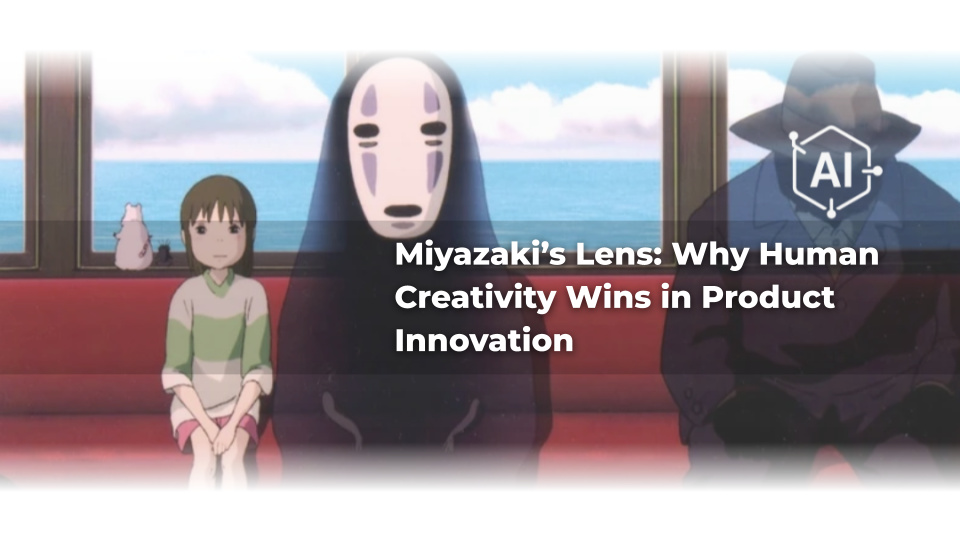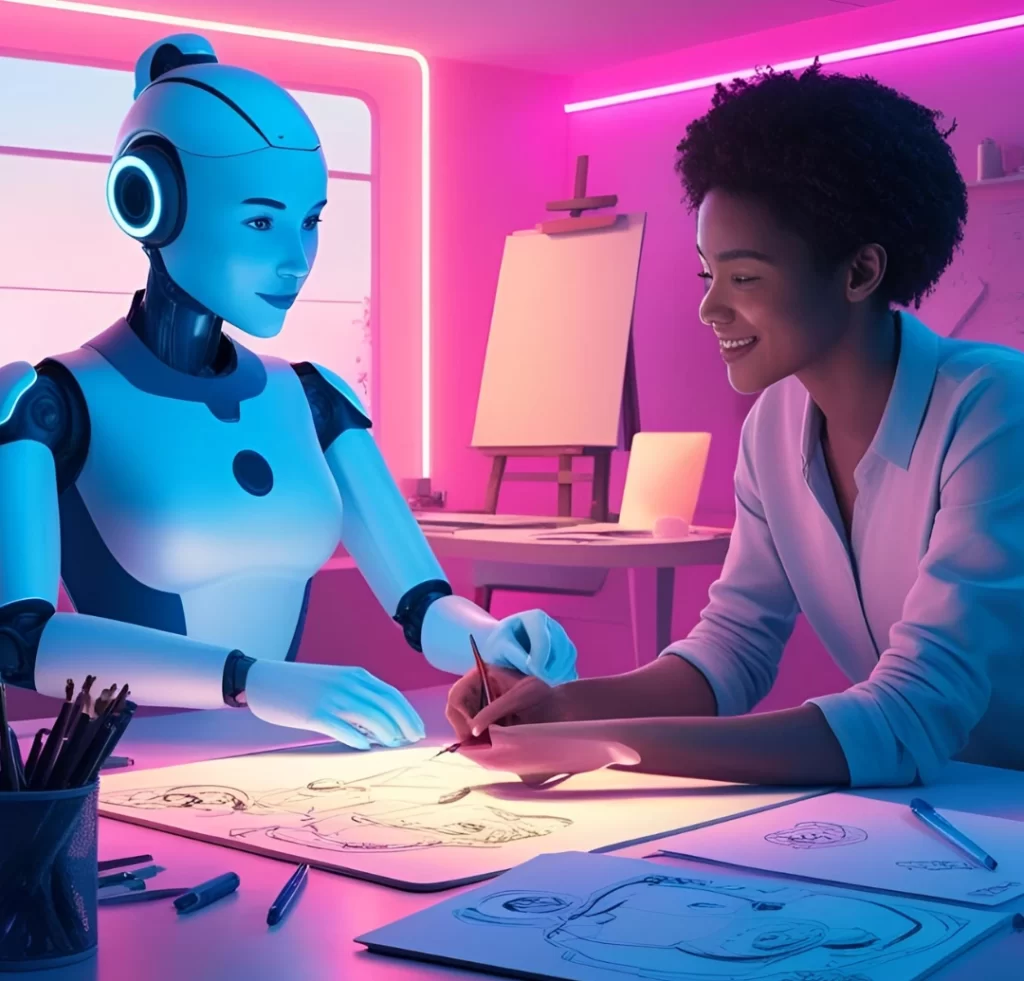
Miyazaki’s Lens: Why Human Creativity Wins in Product Innovation
- Milind Soni
- April 8, 2025
- Blog
- #AIethics, #AIforProductLeaders, #EthicalAI, #productleadershiptraining, #productmanagementtraining, #productstrategy, #ResponsibleAI
- 0 Comments
Hayao Miyazaki, the legendary filmmaker behind Studio Ghibli, once called AI-generated art “an insult to life itself.” Fast forward to 2025, and AI can now mimic his iconic hand-drawn style with eerie precision.
AI is transforming everything, automating tasks, speeding up content creation, even helping to shape product strategies. It’s efficient, no doubt. But the recent Ghibli AI controversy raises a big question: What happens when technology starts replacing the very creativity that makes something special? Miyazaki’s skepticism isn’t just about art; it’s a wake-up call for anyone building products, reminding us that tools are only as good as the humans guiding them.
The Ghibli AI Controversy: A Wake-Up Call for Product Leaders
In March 2025, AI-generated Ghibli-style images flooded the internet, lush fantasy landscapes, expressive characters, even viral memes. But things took a strange turn when the White House shared an AI-generated Ghibli-style illustration depicting an immigrant arrest in a political post
Artists called it theft. Fans were divided. Could a machine really capture the soul of Ghibli’s hand-drawn masterpieces?
For product leaders, this isn’t just an ethical debate, it’s a wake-up call. AI can quickly generate ideas and process information, but without human creativity, the results often feel empty. Miyazaki believed real art comes from human struggle and vision, and the same goes for great products. AI should help creativity, not replace it. Because at the end of the day, the best products don’t just work, they mean something. And that still takes a human touch.
The Human Touch in Product Design; Where AI Falls Short
Miyazaki’s films (like Spirited Away and The Boy and the Heron) embrace ma, the Japanese concept of emptiness that gives emotions room to breathe. AI, no matter how powerful, doesn’t understand the weight of silence, the depth of nostalgia, or the beauty of imperfection.
Sure, AI is great at spotting patterns, predicting trends, and generating UI mockups. But it doesn’t feel. It doesn’t sense unspoken needs. Think about the iPhone’s game-changing design. It wasn’t an algorithm that asked, ‘How does this feel in someone’s hand? Human intuition made it iconic.
AI can suggest features, but it won’t challenge the status quo. It won’t ask, “What if we break the rules?” That’s where product leaders come in to make sure what they build isn’t just functional, but meaningful. Just like Miyazaki’s hand-drawn frames, the best products have a human touch.
Human Vision Powers AI Success
Miyazaki’s films used CGI sparingly, but never let technology overshadow human storytelling. Likewise, the most impactful AI-powered tools follow the same principle. Spotify’s Discover Weekly blends algorithms with curated taste, and Apple’s Face ID balances machine learning with intuitive design. Adobe’s generative AI doesn’t replace artists; it accelerates their workflow, like a digital brush that respects the hand guiding it. But when systems like Tesla’s Autopilot prioritize data over discernment, they forget Miyazaki’s lesson: true innovation breathes in the pauses, where meaning lives.
For product leaders, the lesson is simple: use AI as a tool, not a replacement. Let it handle the busywork, but keep human creativity in charge. Miyazaki wouldn’t hand his storyboards over to a machine, just like you shouldn’t let AI dictate your product strategy.
Conclusion: Creativity Wins
The Ghibli AI controversy and Miyazaki’s stance remind us of a simple truth: AI can mimic, but it can’t dream. It lacks soul. For product leaders, the challenge is finding the right balance using AI’s efficiency without losing the human creativity that makes products truly great.
At ProdZen, we help product leaders find the right balance using AI to enhance creativity, not replace it. Join our AI for Product Leaders course to learn how to build AI-powered products that truly connect with users. Just like Miyazaki didn’t let automation define his art, great product leaders make sure AI serves their vision, not the other way around.




